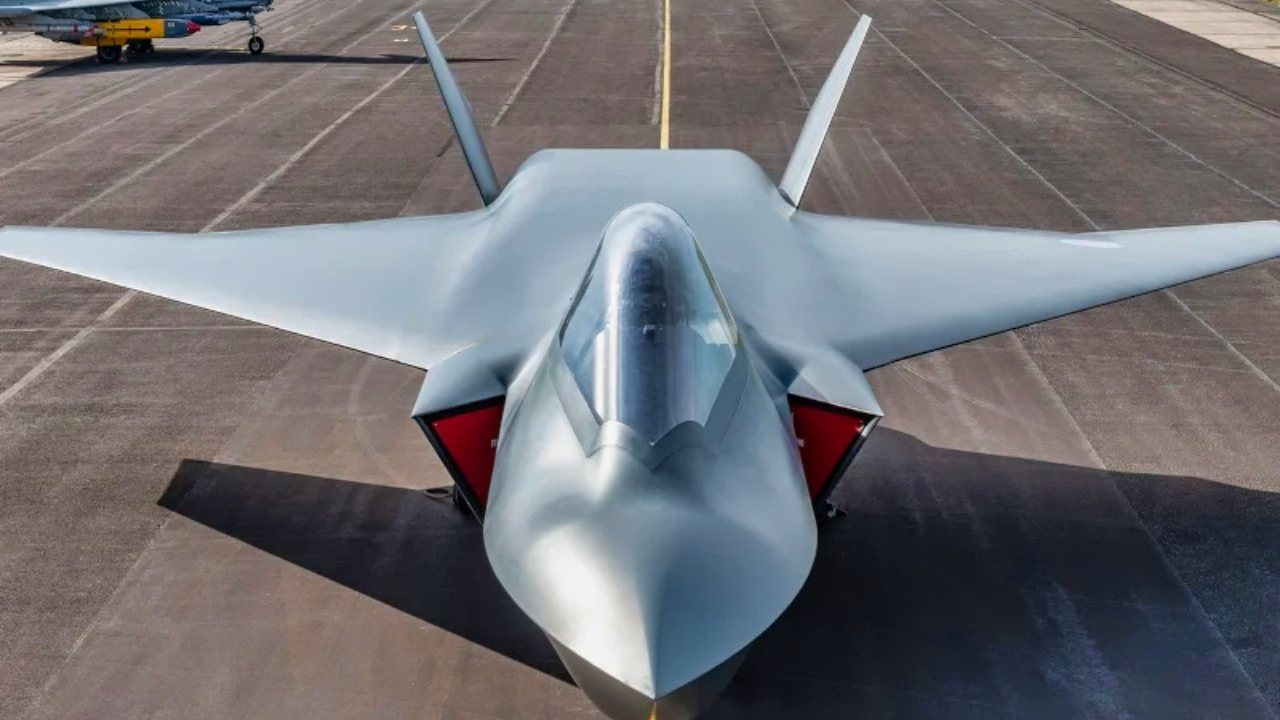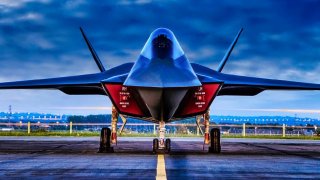Forget F-35, F-22 or NGAD: 7th Generation Fighter Really Possible?
Whether a seventh-generation fighter will emerge is uncertain, as rapid advancements in drone technology and artificial intelligence could shift the focus away from manned aircraft entirely in the coming decades.
Summary and Key Points: The evolution of fighter jets has progressed through five generations, with a sixth currently in development. The first generation began in 1943 with the Messerschmitt Me 262, followed by advancements in speed, avionics, and stealth across subsequent generations.

-Fifth-generation jets like the F-22 and F-35 are today's most advanced, but a sixth generation is on the horizon, likely featuring unmanned options, data fusion, and network interconnectivity.
-Whether a seventh-generation fighter will emerge is uncertain, as rapid advancements in drone technology and artificial intelligence could shift the focus away from manned aircraft entirely in the coming decades.
What’s Next for Fighter Jets? A Look at Potential Seventh-Generation Technology
Will there ever be a seventh-generation fighter jet?
It’s hard to say right now, given no one has created a sixth-generation fighter jet.
But as drone technology and artificial intelligence progress, we do seem to be approaching a watershed – some moment that changes the predictable trajectory of aerospace development.
Fighter Jets: What Came Before
Before considering what comes next, let’s consider how we got to where we are – with the fifth generation of fighter jet aircraft in the skies, and on the verge of welcoming the sixth.
Jet aircraft generations are not perfectly delineated, and there is some debate over where the lines sit. But generally, there is an understanding that fighter jet technology has progressed gradually through five generations, beginning in 1943 with the introduction of the first ever fighter jet, Nazi Germany's Messerschmitt Me 262.
First-generation jet aircraft were simple machines, not unlike the piston aircraft that came immediately before. Most first-generation aircraft had straight wings. All flew at subsonic speeds and carried conventional armaments. Examples include the DH Vampire and P-80 Shooting Star.
The second generation is generally understood as beginning in 1953 with the introduction of transonic/supersonic abilities, air-to-air missiles, and radar. Second-generation types include the F-86 and MiG-15, which dominated the skies during the Korean War.
Where the third generation begins is debatable, but it is often pegged to the introduction of multi-purpose fighter-bombers in the 1960s. Examples include the F-4 Phantom, MiG-23, and Mirage F1. Third-generation jet aircraft enjoyed a heyday during the Vietnam War era.
Fourth-generation fighters are in many respects still relevant today. This generation introduces advanced avionics, modern weaponry, and high maneuverability. Examples include the F-14, F-15, F-16, MiG-29, and Mirage 2000, all of them developed between 1974 and 1990.
Most pundits (and aerospace manufacturers) describe a fourth generation-plus – airframes that are a touch too advanced to be fourth-generation, but are not quite fifth-generation. Fourth-generation-plus aircraft were typically designed in the 1980s and 1990s and include types like the F/A-18, Su-30, Eurofighter Typhoon, Dassault Rafale, and MiG-35.
Then comes the fifth generation, introduced in the 21st century and featuring stealth technology, supercruise, thrust vectoring, and cutting-edge avionics. The generation includes, to-date, just four airframes: the F-22, F-35, Su-57, and J-20. Today, fifth-generation aircraft are the most advanced fighter jets in service anywhere. But aerospace developers in North America, Europe, and Asia are already working to develop a sixth-generation platform.
Future Generations of Fighter Jets: Ehter a 7th Generation Fighter
In all likelihood, someone will develop a sixth-generation fighter in the near to middle future. What exactly the sixth generation will include is not yet clear, but will of course be more advanced than the fifth generation, likely with an unmanned option, data fusion, and network interconnectivity.

Will there be a seventh generation? Hard to say. Any next generation likely won’t emerge for another 30 or 40 years, at which point fighter jets as we know them may mostly be a thing of the past. Drones and artificial intelligence are progressing at a rate where the flesh-and-blood pilot is likely to be replaced partially or entirely in the next decade or so. If there is a seventh generation, it might not include human operators.
About the Author: Harrison Kass
Harrison Kass is a defense and national security writer with over 1,000 total pieces on issues involving global affairs. An attorney, pilot, guitarist, and minor pro hockey player, Harrison joined the US Air Force as a Pilot Trainee but was medically discharged. Harrison holds a BA from Lake Forest College, a JD from the University of Oregon, and an MA from New York University. Harrison listens to Dokken.
All images are Creative Commons.


